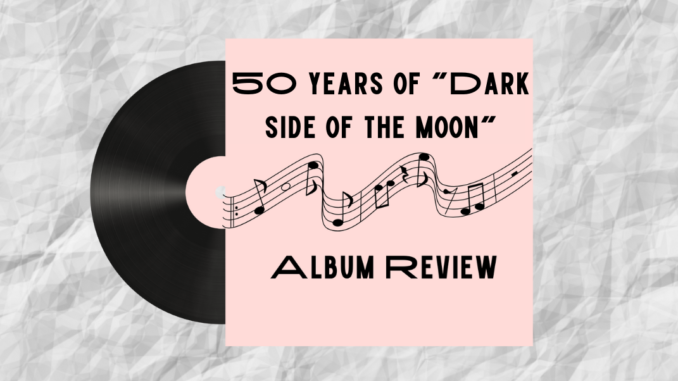
What has not been said about Pink Floyd’s seminal album “The Dark Side of the Moon?” Innovative. Game-changing. “Far out, man.”
When it was released during March of 1973, the album met immediate critical and commercial success. Fifty years later, the album remains one of the cornerstones of not just progressive and psychedelic music, but classic rock as a whole.
Popular music was changing rapidly during the early 70s. Gone were the days of hippie optimism, replaced by soulful funk, bluesy hard rock and artsy singer-songwriters. And at the center of it all were four British musicians: guitarist David Gilmour, drummer Nick Mason, bassist Roger Waters and keyboardist Richard Wright.
Pink Floyd had been making music for several years with moderate success in Britain and North America. This all changed during 1972 when they developed a new project inspired by prior material and performances, their newfound fame and the deteriorating mental health of their former bandleader, guitarist Syd Barrett.
The project attempted to encapsulate the modern human condition into one concise piece of work. While Pink Floyd’s previous albums saw shared songwriting responsibility amongst the band members, “Dark Side” marked the first time de-facto bandleader Waters wrote most of the lyrics — though everyone would share musical contributions. This shared vision resulted in Pink Floyd’s most consistent and tonally coherent album.
The first half of the album represents a sort of musical journey from birth to death in five songs. The opening interlude, “Speak to Me,” introduces the album’s auditory motifs — such as cash registers, interview snippets and the iconic heartbeat, before giving way to “Breathe (In the Air).” The next track, “On The Run,” features pulsating synths, hypnotizing hi-hats and sounds of someone running through an airport, creating a hopeless urgency. This urgency carries to the next song, “Time,” a song about the inescapability of aging. This song might be my favorite, as it sees every band member in top form. This is followed up by “The Great Gig in the Sky,” a meditation on death and the afterlife, featuring peaceful piano, which lures you into a cacophony, and singer Clare Torry’s impressive vocal work.
If side one reflects the modern life cycle, side two represents common issues found within modern life. Fittingly at the center of it all is “Money” — perhaps the most notable track of the album — the sinister bassline underscores satirical lyrics about greed and materialism. The ethereal “Us and Them,” a reflection on the pointlessness of conflict and war, shifts into the purely psychedelic “Any Colour You Like.” Finally, “Brain Damage,” a statement on mental health and the band itself gives way to “Eclipse,” an explosive culmination tying together all of the album’s themes.
One cannot talk about the album without mentioning the striking album art designed by
Storm Thorgerson. The simple and bold imagery of a beam of light refracting within a prism to create a rainbow has been the envy of album and t-shirt designs and remains an enduring symbol of Pink Floyd’s creative height.
Listeners can still take plenty away from “Dark Side of the Moon” today – lyrics reflecting growing older amidst conflict, greed and poor mental health are timeless issues that can apply to nearly anyone, anywhere. It’s also a perfectly sequenced album, with each song thematically flowing from one to the next. Musically dense and layered instrumentation keeps this album fresh and unique even after listening to it dozens — or hundreds — of times.
